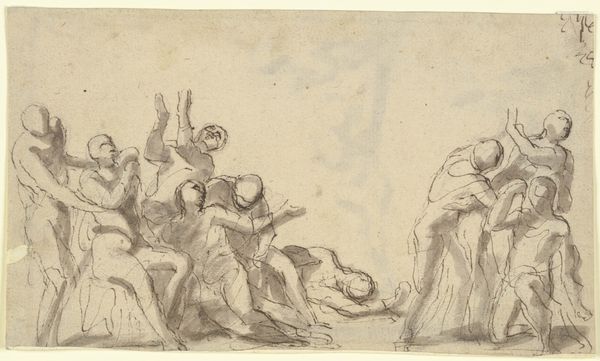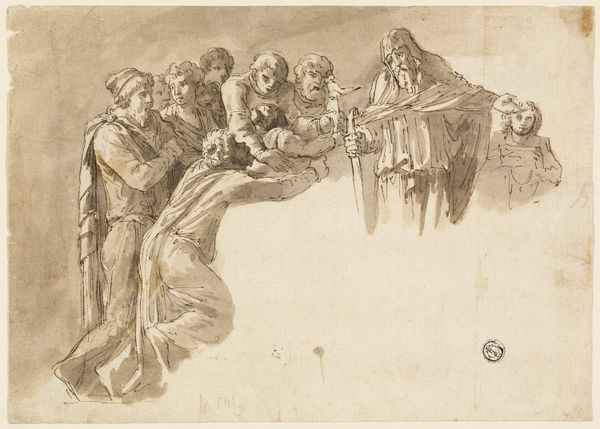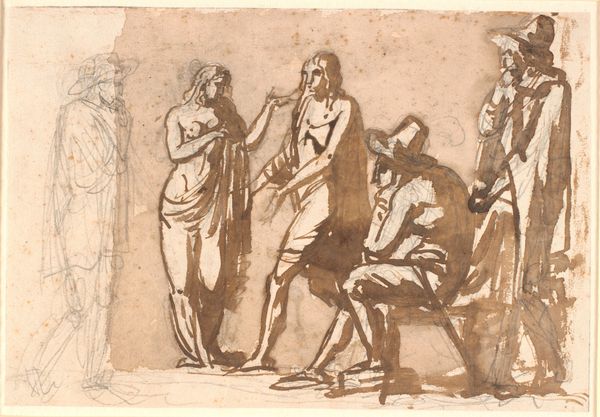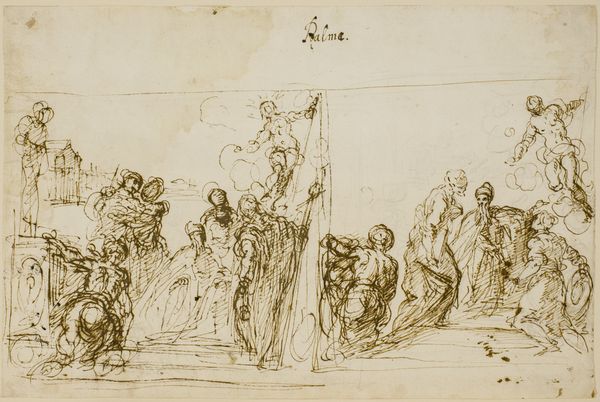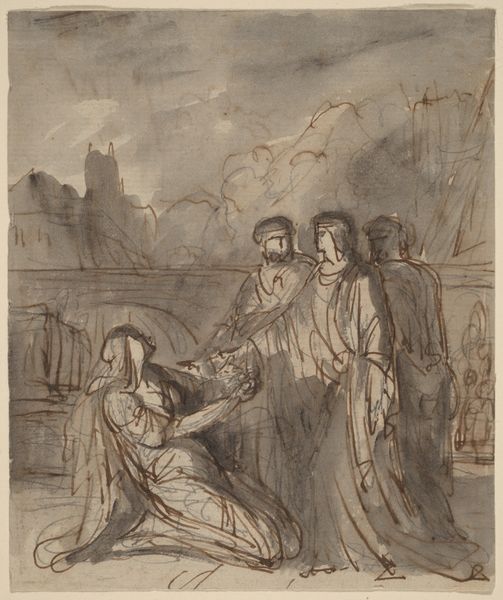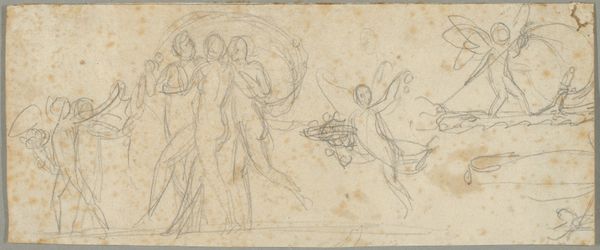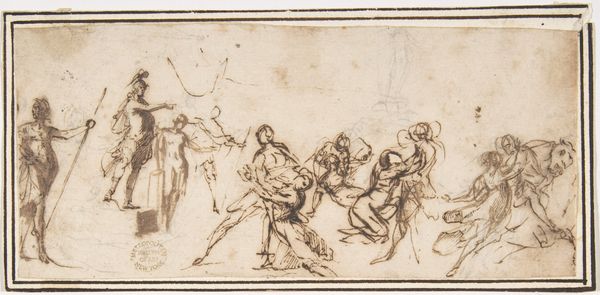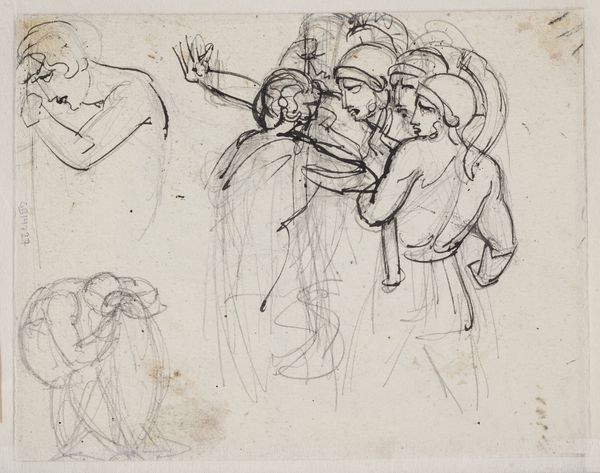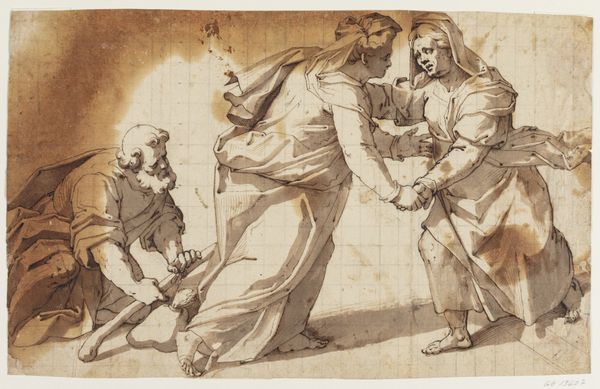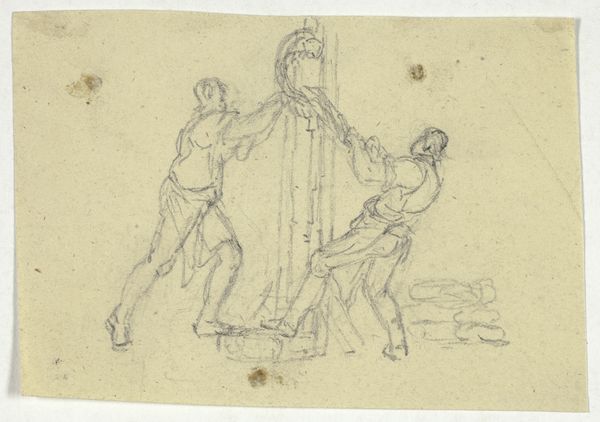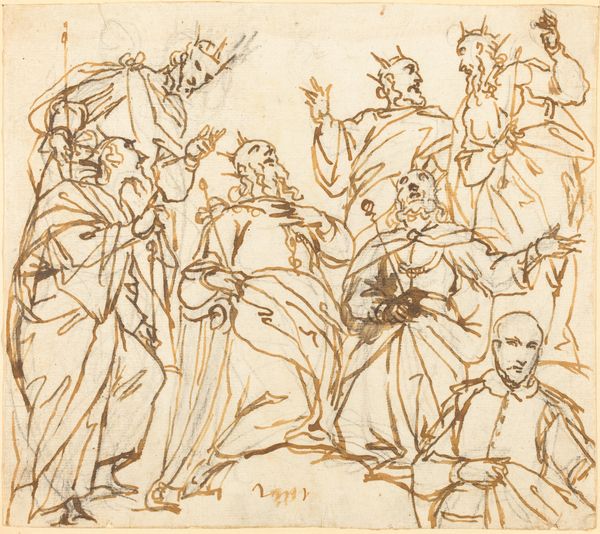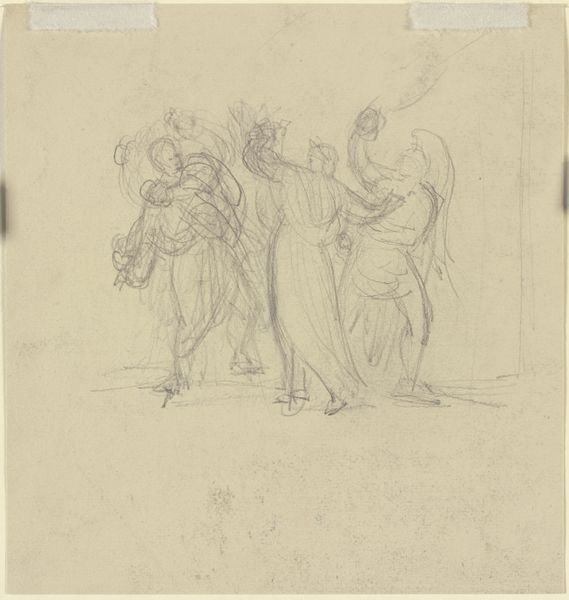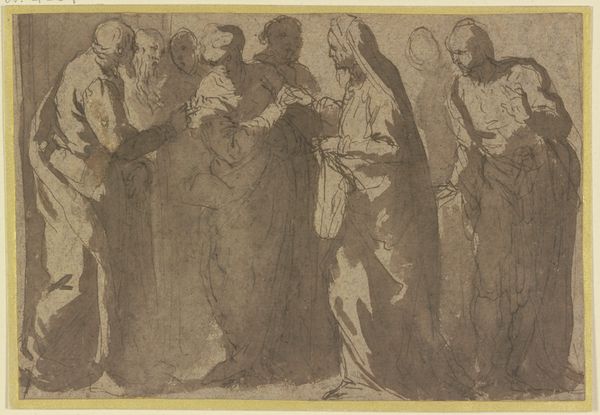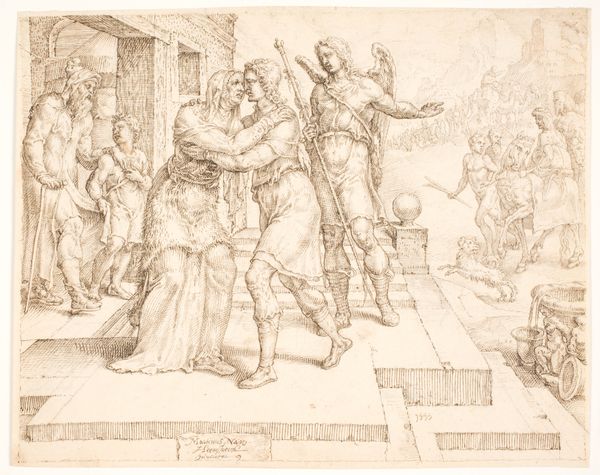
drawing
#
portrait
#
drawing
#
figuration
#
11_renaissance
#
italian-renaissance
Dimensions: overall: 14.1 x 16.3 cm (5 9/16 x 6 7/16 in.)
Copyright: National Gallery of Art: CC0 1.0
Curator: This drawing, thought to have been created between 1505 and 1510, is attributed to Vittore Carpaccio. It is titled, "The Virgin and Four Other Women." Editor: Wow. There's such raw emotion radiating off this simple sketch. It's almost haunting, wouldn’t you say? The delicate lines barely contain the feeling. Curator: Absolutely. The figuration is striking; the rendering of women's bodies invites complex questions of representation, particularly within the religious context suggested by the Virgin. Editor: Religious, maybe, but also intensely personal. The way the women are clustered together, leaning, like they're drawing strength from one another...it feels almost forbidden, like glimpsing a secret. And is that a man lurking in the background, bearing gifts...or something? He almost looks ashamed to be intruding on their grief. Curator: Indeed. Consider the societal position of women in Renaissance Italy, how their agency was often restricted, particularly in the domestic and religious spheres. How does Carpaccio engage, or perhaps subvert, those expectations here, representing this group of women with such apparent emotional depth? Editor: Subvert, definitely subvert. They're not passive figures; they're experiencing something profound. Even the medium of the drawing, the visible strokes of the artist, amplifies this. You can almost sense the hand of Carpaccio, capturing a raw, unfiltered feeling. It makes you wonder what these women witnessed, and if it’s related to the strange man behind. Curator: His presence opens up possibilities: an encounter with otherness or marginality... how the intersections of gender, class, and religious authority operate to reinforce existing power structures, or whether the offering signifies something more. Editor: It's really the ambiguity that I find so compelling. The sketch leaves it up to us, doesn’t it? There’s a strange vulnerability within its unpolished style, like an old photograph from centuries past, but its story could have taken place only yesterday. Curator: Well, that's one of the many reasons Carpaccio remains such a resonant artist today. It allows for multiple interpretive avenues into the narratives of gender, identity, and religion within art history. Editor: Beautifully put! A reminder that art is less about definitive answers and more about the conversations we have with ourselves.
Comments
No comments
Be the first to comment and join the conversation on the ultimate creative platform.
